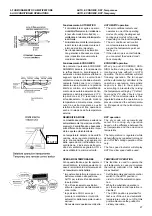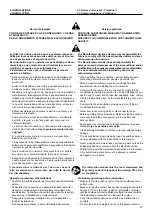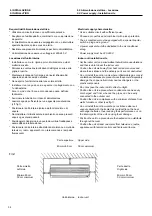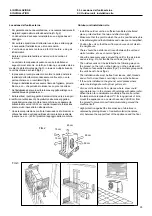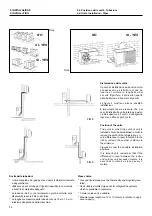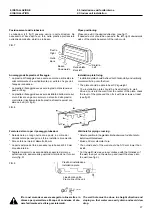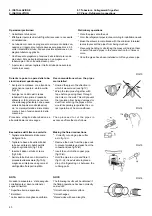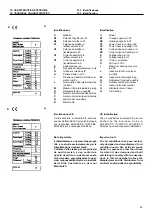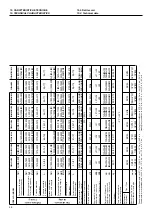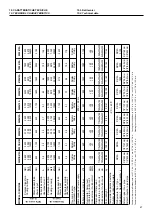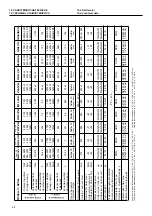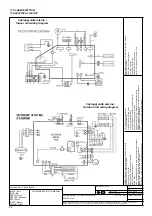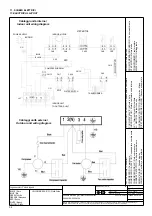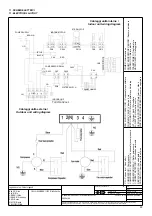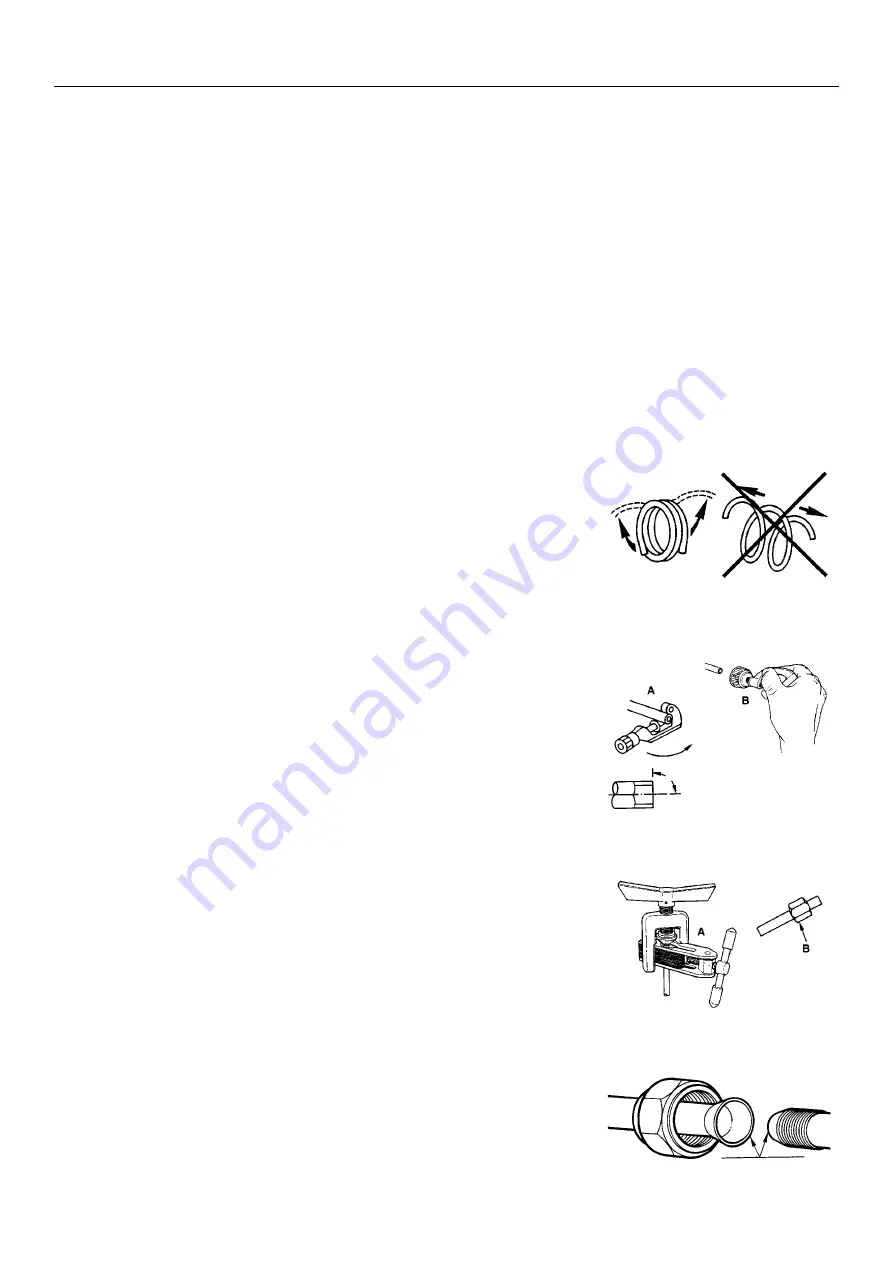
40
Operazioni preliminari
* Cartellinare le tubazioni.
* Effettuare il percorso dei tubi frigoriferi secondo le necessità
di installazione.
* Le tubazioni si devono piegare solo al momento della con-
nessione. Il raggio di curvatura deve essere superiore a 3,5
volte il diametro del tubo. Si deve prestare attenzione a non
piegare tubature aggrinzite.
* Una frequente piegatura o tensione delle tubature le rende
più deboli. Fare pertanto attenzione a non piegare una
tubatura più di tre volte nello stesso punto.
* A percorso concluso tagliare il tratto di tubazione eventual-
mente in eccesso
Preliminary operations
* Flare the pipes at both ends.
* Form the refrigerant pipes route according to installation needs.
* Make the elbows in compliance with the minimum tolerated
radius to prevent the pipes from being crushed.
* Frequently bending or stretching the pipes will harden them,
so avoid to bend a pipes in the same section for 3 times or
more.
* Once the pipes have been installed cut off any excess pipe.
Durante la posa in opera delle tuba-
zioni ricordarsi quanto segue
* Svolgere la matassa con attenzione
nel senso nel quale e` stata avvolta
(fig.13).
* Avvolgere con del nastro le due
tubazioni fra loro prima di passarle
attraverso i fori nel muro per evitare
che si danneggi l'isolante o che possa
entrare della polvere nelle tubazioni;
cio` comprometterebbe irrimediabil-
mente il buon funzionamento della
macchina.
Procedere al taglio della tubazione e
alla cartellinatura come segue.
Reccomendations when the pipes
are installed
* Unwind the pipe in the direction in
which it was wound (see fig.13).
* Wrap the two pipes together with
tape before passing them through
the holes in the wall. This will prevent
the insulation from being damaged or
dust from entering the pipes as this
would irreparably jeopardize the cor-
rect operation of he air conditioner.
Then proceeed to cut the pipes in
excess and flare them as follows.
Esecuzione dell'attacco a cartella
* Tagliare correttamente il tubo come
da figura 14-A.
* Togliere le bave alle estremità del
tubo per evitare probabili perdite
di gas negli attacchi (fig.14-B).
* Inserire il dado nel tubo di rame
(fig.15-B).
* Serrare forte il tubo con il morsetto e
procedere alla svasatura (fig.15-A);
meglio se si interpone una goccia di
olio frigorifero fra le parti in attrito.
Making the flared connections
* Correctly cut using a pipe cutter
as in fig.14-A.
* Remove the burrs from the pipe ends
to prevent probable gas leaks from the
connections (see fig.14-B).
* Insert the nut into the copper pipe
(fig.15-B)
* Hold the pipe in a vice and flare it
(fig.15-A); it is advisable to place a
drop of refrigerating oil between the
rubbing parts.
FIG.13
FIG.14
9. INSTALLAZIONE
9. INSTALLATION
9.7. Tubazioni - Collegamenti frigoriferi
9.7. Pipes - Refrigerant connections
FIG.15
FIG.16
NOTA
Quando la svasatura e` stata eseguita
correttamente si devono ottenere i
seguenti risultati:
* Superficie liscia e speculare.
* Bordi lisci.
* Lati svasati con lunghezza uniforme
NOTE
The following results will be obtained if
the flaring operations has been correctly
carried out:
*Smooth and specular surface
*Smooth edges
*Flared sides with even lengths


